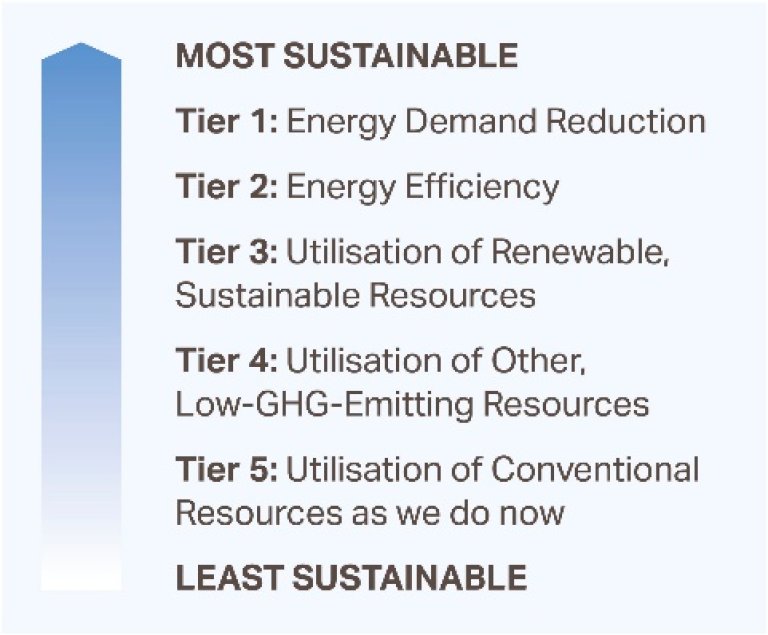By now, we're steadily battered by reports on the scale and urgency of the climate challenge - but what are new implications for the building sector? Should this impact how we judge the quality of real estate assets, when it comes to mitigating risks and maximizing opportunities in the energy transition?
In Norway for example, where a significant portion of Storebrand's property portfolios is located, the building and construction sector accounts for around 15% of national greenhouse gas emissions. If emissions linked to offshore Norwegian oil and gas production are excluded, the proportion of emissions is much higher at 24%. Globally, the sector consumes about a third of the world's energy end-usage, according to analysis by the International Energy Agency (IEA).
This March, a massive summary climate report arrived from the UN climate science panel IPCC, which stated bluntly that world is acting too slowly to succeed in meeting the climate challenge. Among the key targets the IPCC details are slashing emissions by half within the next 7 years, and scaling up practices and infrastructure that boost climate resilience.
What does this mean for managing the emissions and energy transition readiness of building sector? The key, says the IEA, is a shift from buildings as a passive energy consumption point, to a role as an active element in energy systems and local physical ecosystems.
Energy efficiency has a multiplier effect
This vision was crystalised in a recent IEA commentary, "There’s more to buildings than meets the eye: They hold a key to net zero emissions." Here the IEA points to a modern net zero future in which emission reductions are enabled by buildings equipped to utilize energy efficiently, while also containing on-site renewable energy generation and storage capabilities.
The net effect, the IEA notes, would be go beyond reducing energy usage and emissions- intensity of the buildings' electricity usage. The broader emissions effect would also come from reducing electricity grid congestion and the need for fossil-fuel-burning power plants.
Storebrand has committed to science-based targets for emission reductions, aligned with a 1.5-degree scenario. Specifically, to reduce our real estate portfolio scope 1 and 2 GHG emissions by 64% per square meter for residential buildings and by 71% per square meter for commercial buildings within our management of direct real estate investments by target year 2030 from a 2019 base year. To get there, our primary focus actions centre around decarbonizing managed properties through direct interventions in energy reduction and on-site production of renewable energy, and secondarily to procure 100% renewable energy on the market through 2030.
Reducing energy consumption
Most classic energy management strategies follow what is known as "The Energy Hierarchy". This prioritization that begins with measures to reduce total energy demand, then per-unit energy efficiency rates, followed by measures to increase share of renewable energy sources used, then use of low GHG-emissions energy sources.
At Storebrand, our experience from working in line with this strategy is that while Tier 1 measures can produce the best long term sustainability benefits, there are currently still many barriers to implementing them.

Caption: The energy hierarchy is a guide for prioritizing energy management initiatives
Credit: Source: Institution of Mechanical Engineers, UK (IMechE)
So far, the results within our Norwegian portfolio are that active energy management on the asset level, refined to hourly levels, has resulted in a 12 per cent reduction of energy consumption rates per square meter from 2019 to 2022, while associated greenhouse gas emissions have been reduced by 32 percent. Energy monitoring and improvements in daily operation of building energy systems, along with investments in automation and control systems, lighting systems and other equipment, is on the agenda of property management. Prior to these changes, we also phased out almost all use of fossil fuel-based energy sources at our properties.
However, making these changes does involve some challenges. Some of these issues include the complexity and volume of decisions needed to define energy management tactics, then monitor and adjust them over time.
Increasing active energy production
Producing renewable energy directly onsite is a strategy we have been pursing, by producing solar energy from installations on the roofs on some properties, initially on the roofs of logistics buildings in industrial areas in Norway. By generating renewable energy on-site on brownfield roofs, rather than purchasing grid based renewable energy from a utility, we reduce the need to use greenfield land for energy generation and transmission facilities, and avoid potential conflicts with residents and/or indigenous peoples.
Currently we have five buildings in Norway with solar energy generation facilities installed on their roofs, amounting to a total surface area of 4000 square metres. This is relatively small area, compared to the total unused roof area found across all our properties, including logistics buildings and shopping centres. We have significant expansion ahead, with projects either in the planning or installation stage that we expect to triple the surface area of our solar installations.
So far, we have encountered some challenges, for example in finding solar panels manufactured to our standards of supply chain sustainability, especially with regards to labour conditions and CO2 footprint.
Going nature positive to reduce net emissions
Accounting for nature impacts and dependencies of buildings also has an important role to play in reducing total emissions within the areas where our properties are located. As Storebrand has now recently adopted a new policy on nature, and in summer 2022, we have completed the mapping of biological diversity on our properties. Building on this insight, we are planning measures to protect and increase biological diversity within the footprint of our properties. Furthermore, we have identified threats from issues such as alien species and looking at how we can make a positive contribution to natural diversity locally and regionally These positive contributions can include removing alien species, planting native plants that promote biodiversity and rich animal and plant life, through for example the use of green roofs, bird boxes, and insect hotels. Our roadmap for implementing these stretches between now and 2030.
Policy improvements to reduce gross energy consumption
While these programs that we are implementing align with the IEA and IPCC recommendations for priorities on climate action, there is potential for properties to reduce long terms emissions intensity even more — but it depends on improvements to policy frameworks.
Currently policy frameworks are still relatively simplistic and lacking in the nuances needed for net zero transition. For example, they do not take the proper scope of life cycle assessment: energy reduction and emissions reductions from the operational phase are not weighted alongside emissions from reduction measures (embodied carbon from materials used, from waste handling, from energy in production phase etc. For example, it is important to make sure that emissions related to production and disposal (LCA) are more than offset by reduced emissions in the operational phase. There is a large difference in the characteristics of available products, and our experience from purchasing solar panels shows that their measurable impact can range widely from clearly positive to marginal.
As a result, with current policy frameworks, property owners may risk committing to short-term emissions increases that could significantly exceed any long-term operational reductions that might result from the initiatives they implement.
Experience in Norway
In the Norwegian market for example, Incentives in the form of subsidies for implementation of reduction measures in buildings were eliminated several years ago, based on an increased focus on direct emissions. As a result, since electricity is considered to be virtually "zero emission" energy source in Norway, based on the local energy mix, energy efficiency programs available to Norwegian commercial property owners were eliminated.
Some government support schemes have been continued through programs run by ENOVA, the Norwegian government's state-run enterprise for promoting energy transition activities. However, several current support programs have been changed or terminated, so that overall, the opportunities are far fewer than before.
Currently, it's unclear if the growing climate of international conflict, with energy security high on the agenda, will lead to a long-term shift back towards improving energy efficiency in commercial properties.
Changes to policies and regulations in Norway could help clarify the rules for minimum requirements for rehabilitation (TEK20). We believe that one disadvantage of current requirements is that they are suited to new buildings, which lead to property owners being forced to choose solutions that are not technically adapted to existing buildings. In fact, the appropriate solutions can vary depending on whether the property is a newbuild or renovation — and if it is a renovation, the age of the building.
Another disadvantage of this standard in Norway, is that since the requirements are not adapted to rehabilitation, it would be relatively easy in many municipalities to apply for an exemption from TEK on the grounds that the solutions will be too expensive or technically difficult. Consequently, the project does not set requirements or a level of ambition in relation to the environment, and other qualities may be very low.
We therefore believe that there is a need for separate, customized, and fixed requirements for upgrading of existing buildings. As an alternative to a separate Rehab-TEK regulation in Norway, the standard could contain specified requirements for new buildings and upgrading of existing buildings in a similar manner to the way that the BREEAM manual is structured. There are some positive signs ahead. Progress is being made at regulatory level in the EU, which can filter down towards helpful changes to regulations for the property sector at national level in Norway and the Nordic countries.







